NORTH WALES COAST RAILWAY:NOTICE BOARD
Rheilffordd arfordir gogledd Cymru: Hysbysfwrdd
21 June 2021




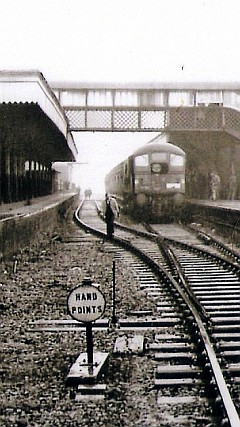
Forthcoming events
(see also our Calendar page for venues)
Note: we have removed all entries relating to meetings as the events are cancelled.
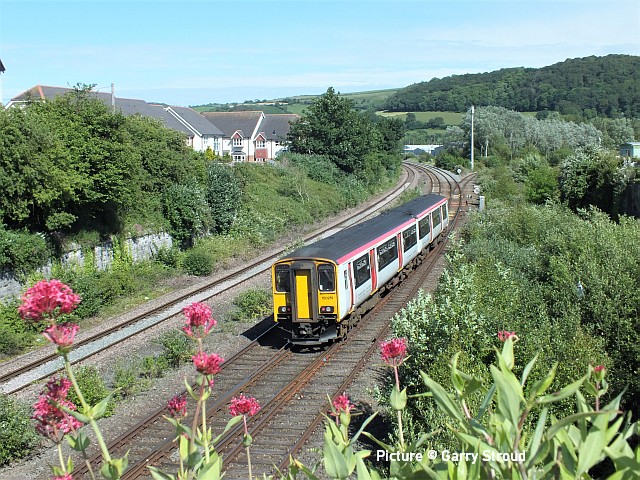
In the TfW livery now being applied to the Class 150s, this rear view
image shows 150 251 in its new colours working the 16:17 Llandudno to
Blaenau Ffestiniog service as it departs Llandudno Junction on 17 June. PIcture by Garry Stroud.
We returned from a few days away to find the inbox overwhelmed! Some items have been held over until the next issue. - Charlie
The return of the Premier Train to Cardiff - by Gary Thomas
Inspired by the photo I took at Conwy Castle the day before, on Thursday 10 June I took the Premier Train (aka the "WAG Express") from Llandudno Junction to Cardiff Central and back. My plan once at Cardiff was to take a trip up to Rhymney to sample a class 769, but things didn't quite work out exactly as planned.
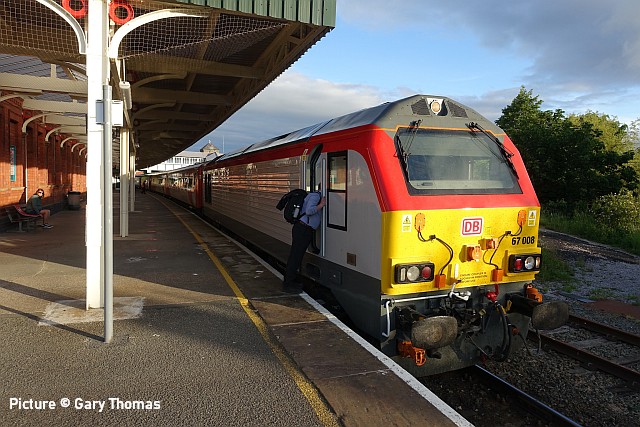
My train, led by 67 008, arrived on time at Llandudno Junction. This loco had worked every turn since the service resumed on Monday 7 June, having stopped in March of last year. The key changes now of course were a new Transport for Wales livery for the locos and mark 4 carriages recycled from the East Coast Mainline.
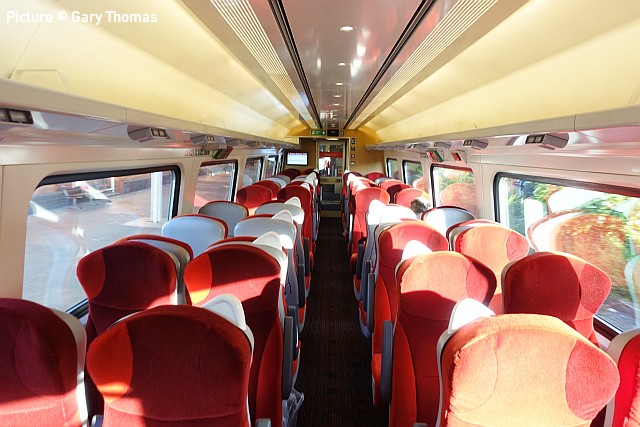
Here are two shots of a standard class mark 4 carriage.
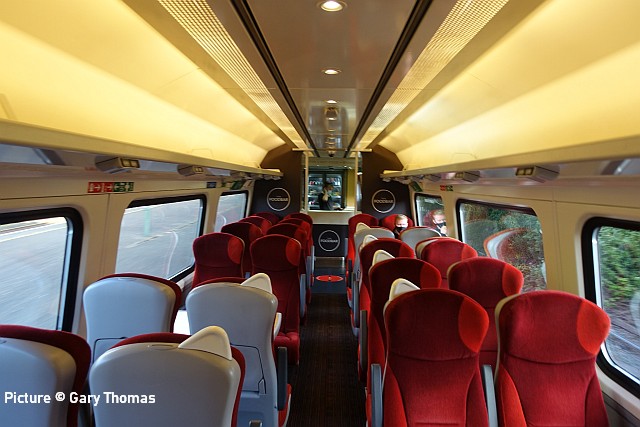
This shows the buffet in the next carriage. While it was great to see the buffet open there was no at seat dining. This is due to resume in September (no doubt when the Assembly Members are back in Cardiff) and given this and that I expected the train to be quiet I purchased a standard class ticket.
If you were of a dishonest nature, you would most likely have had a free trip, as ticket checks don't seem to happen on Transport for Wales services at present, Covid-19 no doubt being the reason.
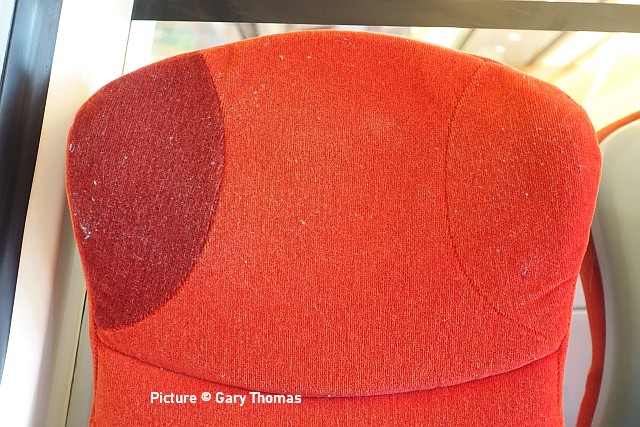
Transport for Wales say the carriages have been refurbished. I used to live near Stevenage so I know these carriages well. The carpet looks new, the seat upholstery is definitely not and indeed, it would have been nice if they had been cleaned in all the time they've been hanging around waiting to be used as evidenced in the picture above.
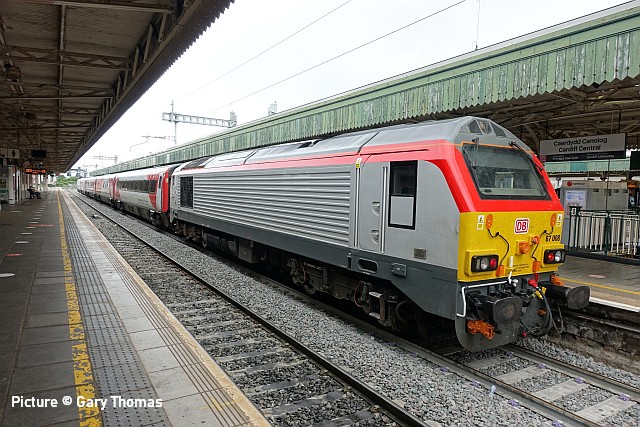
The morning train was pretty quiet throughout, I only counted 5 people getting on in Rhyl, a similar number in Chester and Shrewsbury. The trip was uneventful, with a nice ride down to Cardiff and an on-time arrival. Here is my train before heading off to the depot. It rests in Cardiff for 7 hours at present, plenty of time for a couple of return trips to Swansea or a return to Chester as a fill-in turn.
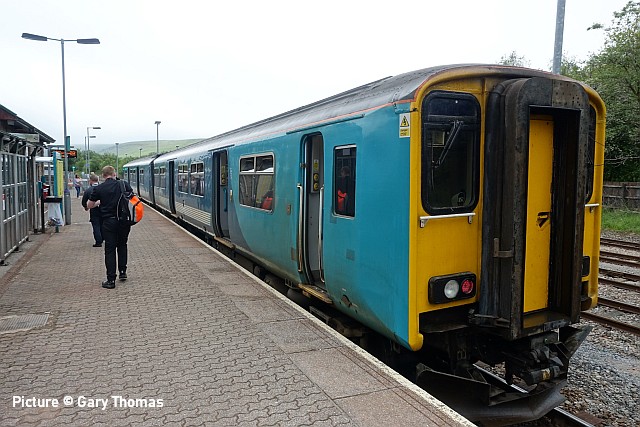
My reason for coming to Cardiff was to sample a class 769 on the Rhymney service. I had never travelled on the line before, but again due to my time living in the South East I was very familiar with them as class 319's on Thameslink and London Northwestern services.
My train to Rhymney pulled up and it was an unrefurbished class 150/2. I debated waiting for the next service, but I decided to persevere. The trip up to Rhymney was fine, indeed it was quite picturesque in places. Again, the service was pretty quiet.
At this point I decided to change my plan as I didn't really fancy returning back to Cardiff with the Sprinter. I hadn't been on the Ebbw Vale line either, so after some research I discovered I could make a couple of trips across the heads of the valley to avoid having to double back twice. So I headed off on a Stagecoach number 1 bus to the outskirts of Merthyr Tydfil, then onwards on the X4 to Ebbw Vale. The buses were expensive - the first driver wouldn't sell me the day rover at £8.70 so I bought a single ticket on both buses, which also turned out to be £8.70. Watching other passengers coming and going a lot of passes were in use! But the buses were fine and they saved me the best part of 3 hours retracing my steps.
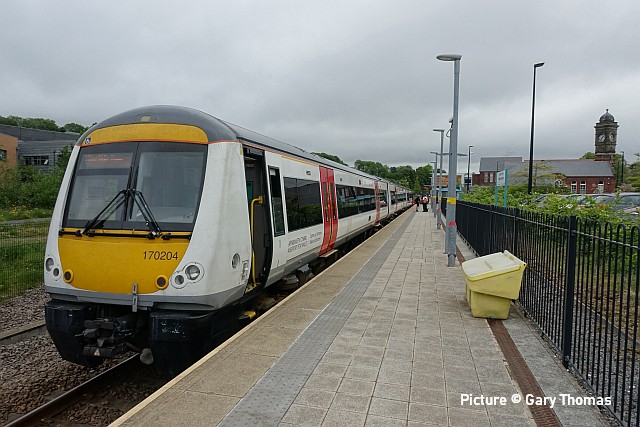
At Ebbw Vale Town's very basic station I watched a 3-car 170 arrive.
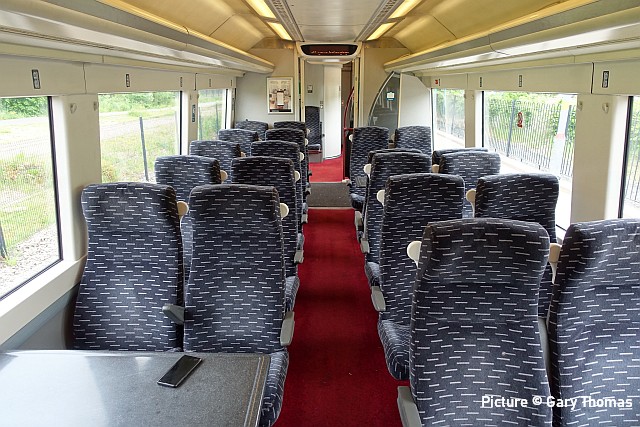
By Welsh standards (WAG Express and refurbished 158/175s excepted) these ex-Greater Anglia units are pretty plush and barely getting into their stride. They coasted down the valley all the way back to Cardiff. I bought a ticket for just over £5 just in case you're wondering! Made the bus look even more expensive.
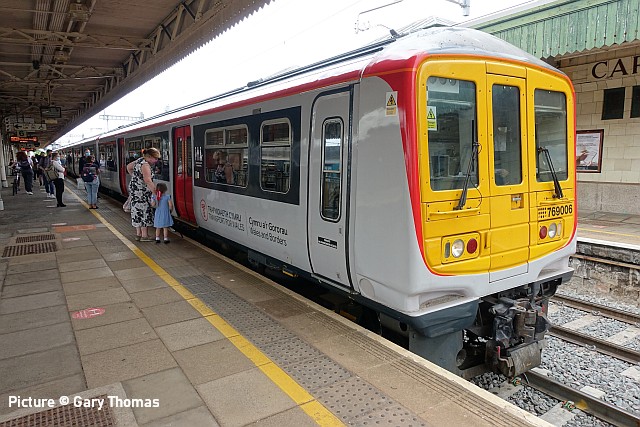
After a walk around Cardiff (last entry to the Castle was an unhelpful 3pm!) I decided to try out the other local units, including the 769's and refurbished 153s. The 769s have been refurbished reasonably well, but they feel dated inside.

I wouldn't fancy these being back up to full passenger use with their tight 3+2 seating. Maybe that will never happen. On electric power on their original services as 319s these trains were pretty nippy but on diesel [These TfW units are diesel-only] this one really struggled up to Queen Street station. I was a little unimpressed and imagined a Pacer would win hands down in a drag race!
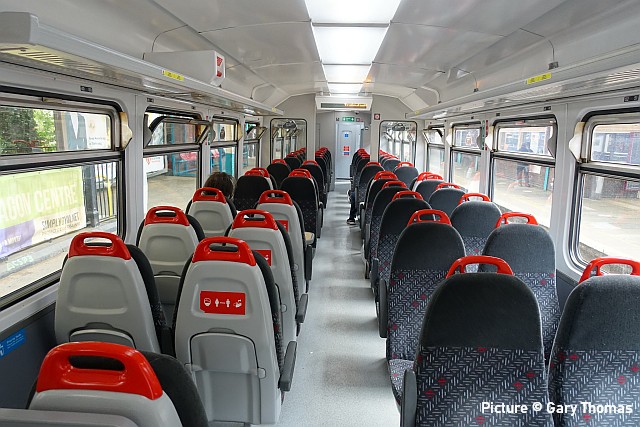
I also sampled a refurbished 153 back to Central. I was really impressed with the interior.
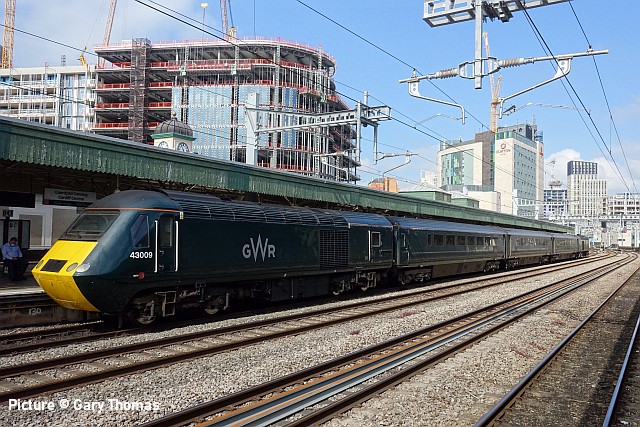
I also decided to try out a GWR Castle HST set (used on Taunton and services further west) to Newport, before joining the 67 back to Llandudno Junction. I was expecting a 4-car train but instead I had 3-cars. Certainly nipper than a 769! The train was pretty busy and with the high back seats were as claustrophobic as ever
My train back through the Marches was equally uneventful. It was a little busier on the return, especially at the start, but it was still a nice trip back and well worth the £63 to Rhymney with a railcard. I felt Covid safe, especially in Cardiff Central where there was really good (and well marshalled) segregation between on the subway and staircases.
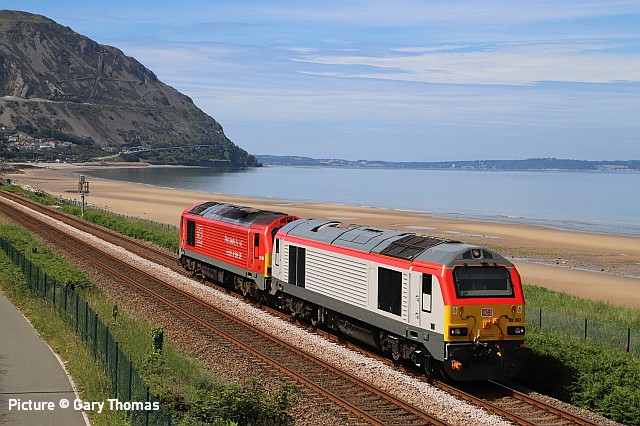
Postscript: On 15 June, 67 017 passed Dwygyfylchi dragging 67010 from Holyhead to Crewe. I don't know whether 67 010 had failed or just requires maintenance.
On the Road again (again)
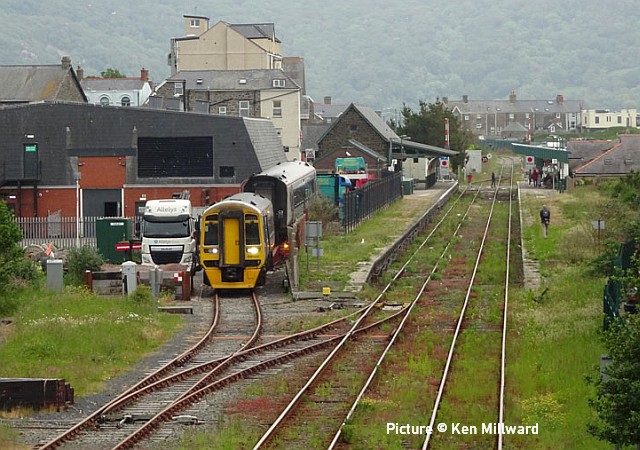
More about the road transfer of Class 158s at Barmouth: Ken Millward viewd from the nearby footbridge as the second car of 158 824 joined its mate in the siding.
Videos of the operation taken by the company are on YouTube: passing through the town and unloading. It wpuld be interesting to know how much this operation cost - presumably the bill has been sent to Network Rail.
From Dave Sallery's archive

The scene at Birkenhead Motive Power Depot (8H) on a Sunday afternoon in 1966.
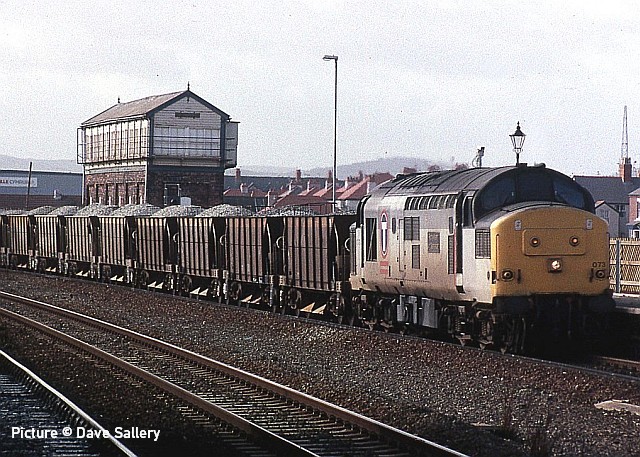
37 073 An Gearasdan/Fort William on an up ballast from Penmaenmawr passing disused Rhyl No.2 signalbox 13 February 1997 with the Crosville bus garage in the background. Did the 'big T' of the short-lived Transrail company inspire the designers of the Transport for Wales symbol?
A Cheshire Day Out - report by Chris Scott
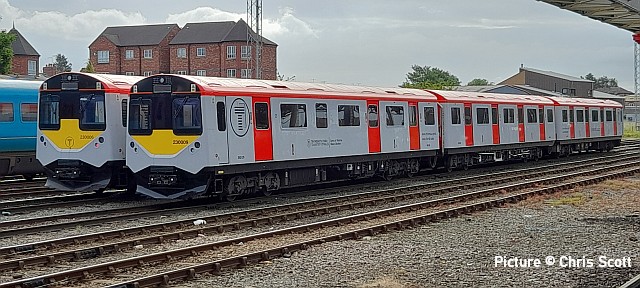
A day out on a Cheshire Day Ranger ticket on 17 June produced the following at Chester: 230 006 and 230 009 parked up. It later transpired 230009 had failed. (230 006 was later seen in the afternoon at Wrexham and appeared to be working.) I learnt that delivery of 230 010 had been held back in order to appear at the " Rail Live" in Moreton on Marsh. and should arrive next week, but may go to Crewe first. Why I do not know.
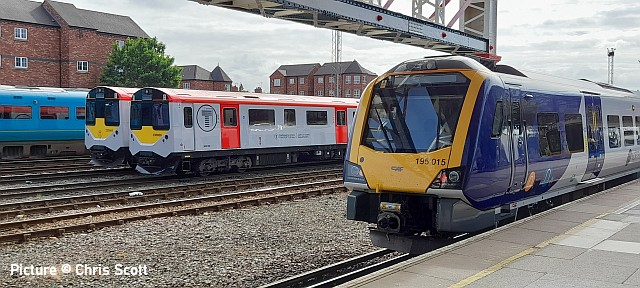
Choice of front ends with the arrival of 195 015 on the Leeds service.
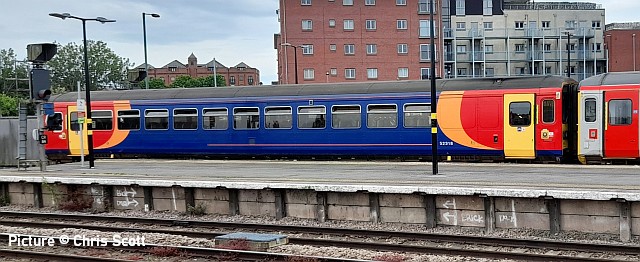
Transferred from East Midlands Trains is 153 318 now renumbered to 153 918, as it has not been upgraded to disability requirements and is only allowed to carry passengers if coupled to a fully-upgraded.
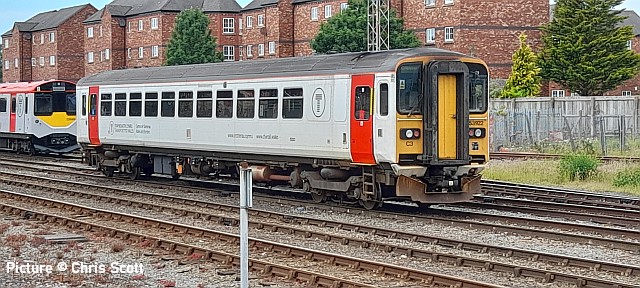
Coincidentally in the holding sidings was 153 922, another transferee, but already re-liveried and re-numbered from 153 322. I had seen this earlier in the day at Wrexham when it was travelling from Chester to Birkenhead via Wrexham.
Rail Live - report by Mark Hambly
I visited the annual two day outdoor Rail Live exhibition at the Quinton Rail Technology Centre (QRTC) at Long Marston on Warwickshire on Thursday 17 June. After the cancellation of the 2020 event, this year's was billed as an opportunity for the industry to get back together in person after over a year of predominantly virtual meetings. As usual the principal emphasis was on "yellow plant" and suppliers of products and services in the power supply, signalling and civil engineering fields.
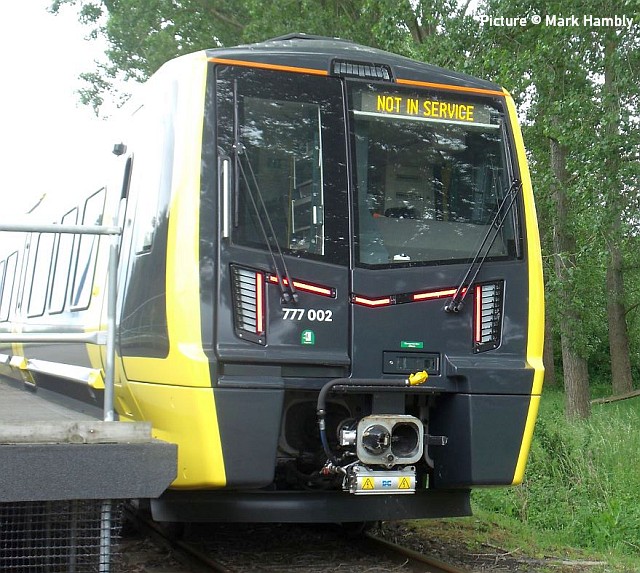
However, the highlight from a Merseyside and North Wales perspective was the presence of two rolling stock manufacturers - Stadler (with the Class 777 for Merseyrail) and Vivarail (with the Class 230 for TfW).
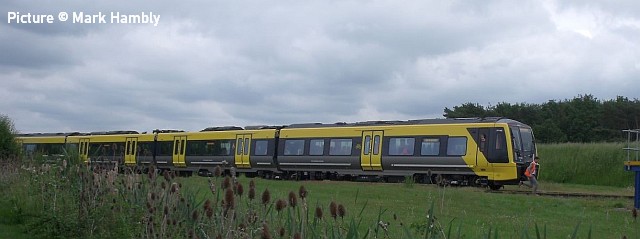
Stadler were making passenger-carrying demonstrations within the site using 777 002, which is the UK prototype of their IPEMU (Independently Powered Electric Multiple Unit) concept, a standard Class 777 third rail EMU with the addition of under-floor traction batteries on the two driving vehicles. Battery charging can be achieved using the third rail current, regenerative braking or rapid induction charging points in the 'four foot' at stations.
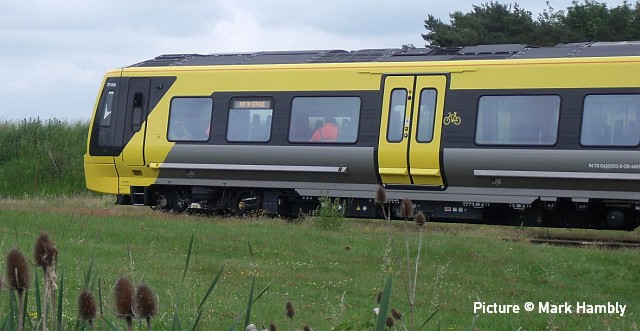
A Stadler representative advised that the prototype battery fit would allow an independent operating range of around 25km, although there was potential for additional batteries to be carried to increase this. The final seven 777s to be delivered from Switzerland will be in IPEMU configuration from new and those already completed could be converted in the future.
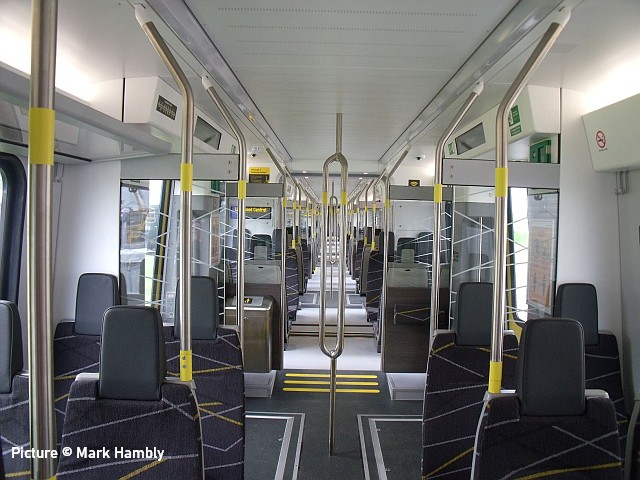
The flexibility offered by the IPEMU would permit future expansion of Merseyrail services beyond the third rail network, meaning that in due course we may see 777s at such places as Preston, Wigan Wallgate, Warrington Central, Helsby and Shotton.
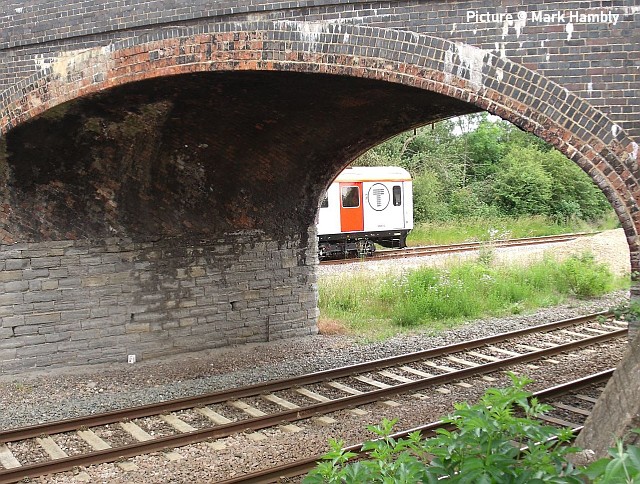
230 010, last of the five three-car Vivarail Class 230 sets for Transport for Wales, was used to provide a shuttle service into the Long Marston site for visitors arriving via GWR Cotswold Line services at Honeybourne, (above) where a short temporary platform was erected on the Long Marston branch accessed from the Up main line platform.
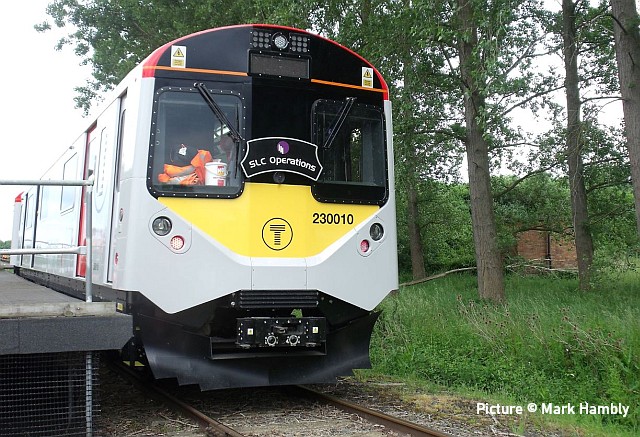
The train was running in battery mode and the ride on the branch was smooth and quiet.
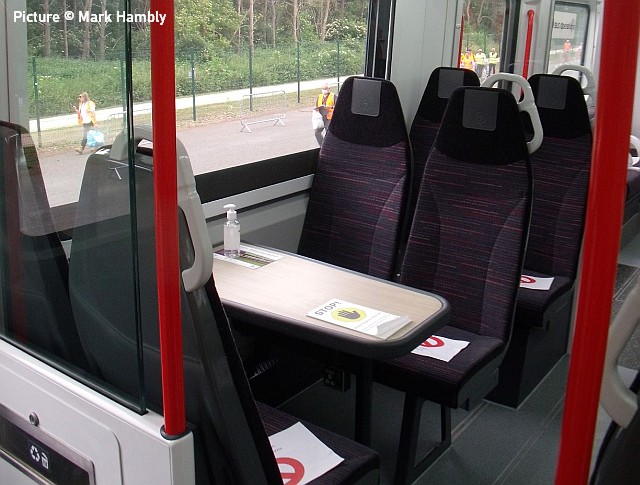
In contrast with the refurbished nature of the prototype Class 230 which was used to provide a similar service back in 2017, the TfW fleet have the feel of a new train and demonstrate how far Vivarail have come in the intervening years.
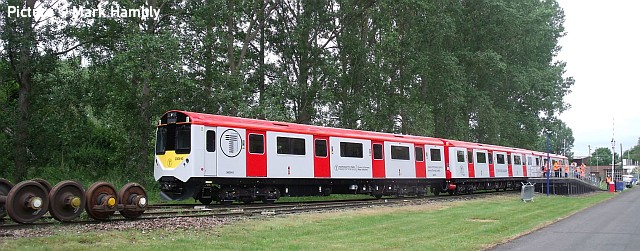
While the heritage of their LUL D78 stock origins is still evident in the single leaf sliding doors and the areas in which longitudinal seating has been retained, the opening-up of the vehicle ends within the set has transformed the internal atmosphere, while in the 2+2 bays with comfortable high-backed seats and tables aligned with the windows Vivarail have achieved a superior configuration to that seen in some of the recent output of much larger firms in the passenger rolling stock world.
In a scene which offered a foretaste of what will no doubt occasionally be seen at Bidston in the future, on Thursday afternoon the incoming Class 230 was held by at the QRTC gatehouse waiting for one of the Class 777 demonstration runs to clear before it could enter the platform to load for the 3pm trip to Honeybourne.
Leaving aside the various items which were present as exhibits at the Rail Live event, my overall impression of the QRTC site was that it was quieter than in previous years in terms of the number of vehicles in storage and other commercial activity on the estate, although I did not do a full count, nor had I done so in 2019 or 2017 to have numbers to make a precise comparison.
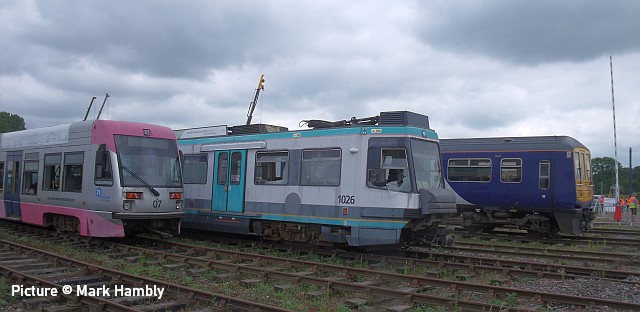
A couple of Metrolink T68 trams (1024 and 1026) remain in open storage, along with Midland Metro vehicles, but are now very much worse for wear, looking as if they may have possibly been used for training exercises by the emergency services.
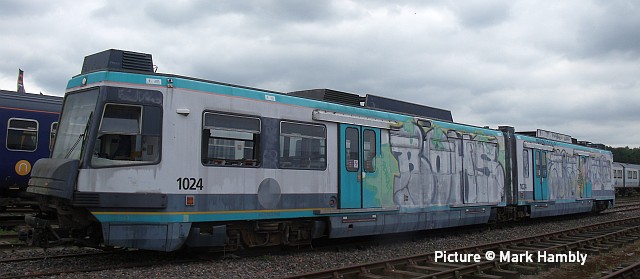
A very noticeable change is that Vivarail have now relocated to their new facility at Southam and so their former workshop building is empty and all their stock of ex-LT D78 vehicles for conversion have been removed. However, Chrysalis Rail's operation remains active and there was a brief burst of shunting at about 1pm which involved two locomotives in the movement of what appeared to be some Class 319 vehicles, which are proving to be a versatile platform for various re-engineering projects to configure them for further service with different operators.
Holyhead, 18 June - pictures by Greg Mape
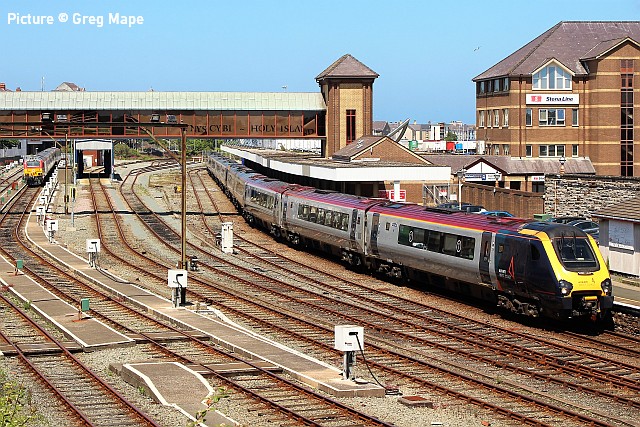
221 113, in Virgin colours with an Avanti front end, heads a pair of Voyagers about to depart from Euston with 1A48, 13:58 to London Euston. This is one of just two London services at present running on Monday-Friday, the other being the 05:51 departure which is a single 5-car set. On Saturdays there is only the 06:52 departure and on Sundays just the 13:51.
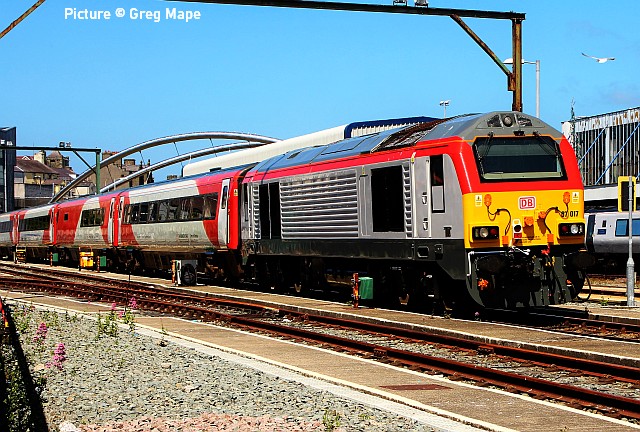
Stabled in the sidings, 67 017 and carriages.
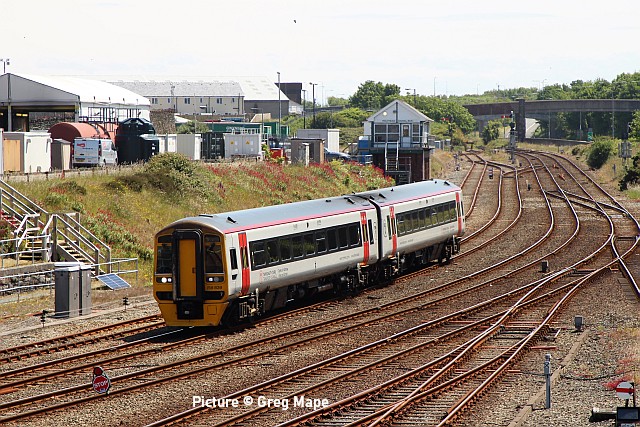
158 839 arrives from Birmingham International.
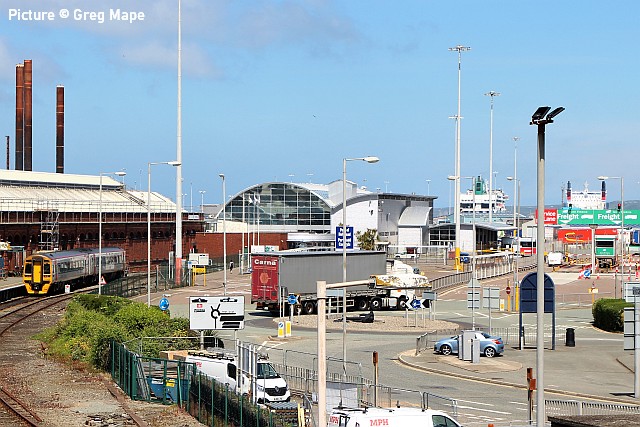
A view across the site of the former Freightliner depot.
Colas 37s on Network Rail duty
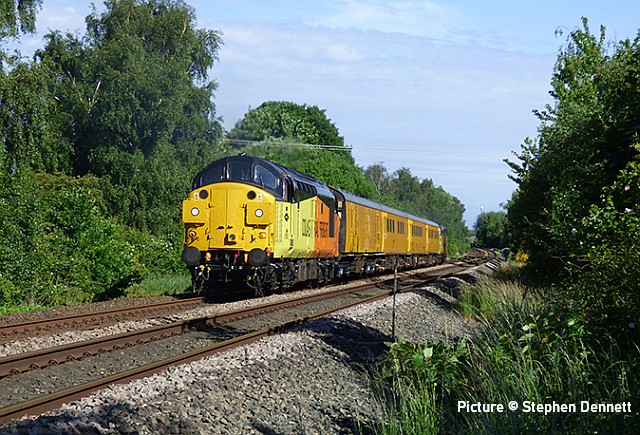
37 057 and 37 116 worked the 10:55 Derby to Holyhead Network Rail test service . on 17 June.
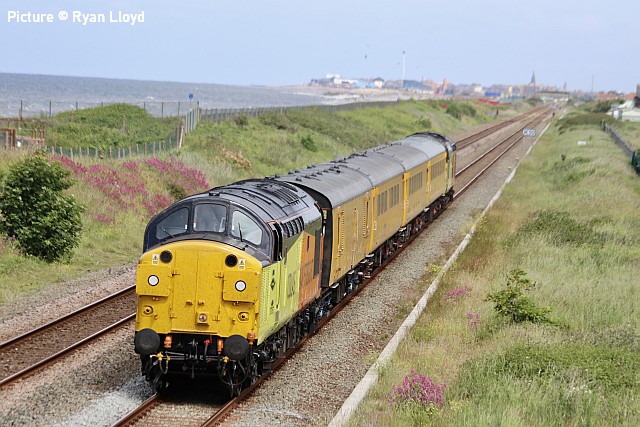
Approaching Abergele ...
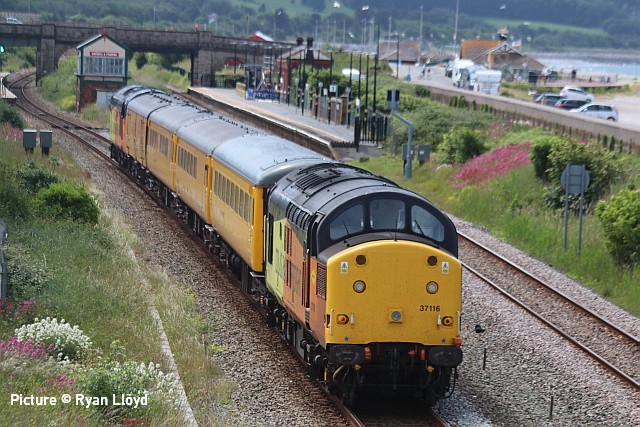
... and heading west with 37 116 on the rear (Ryan Lloyd).
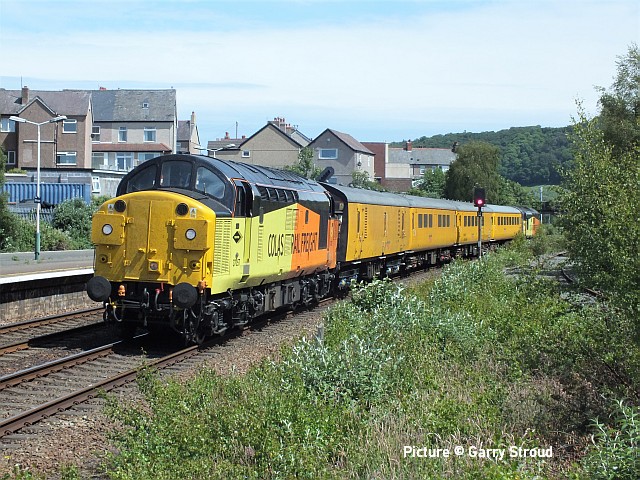
Above, 37 057 ( formerly named Viking ) enters Llandudno Jcn at 14:40 together with 37 116 on the rear on their outward run to Holyhead (Garry Stroud).
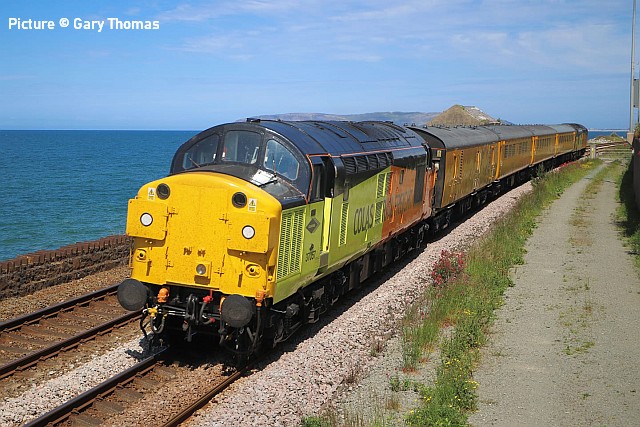
Passing Llanfairfechan, three minutes late (Gary Thomas).
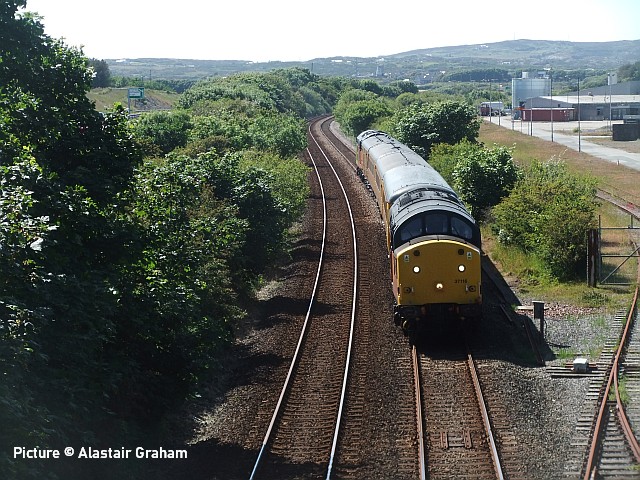
Departing Holyhead on the return journey, passing the former Aluminium works ...
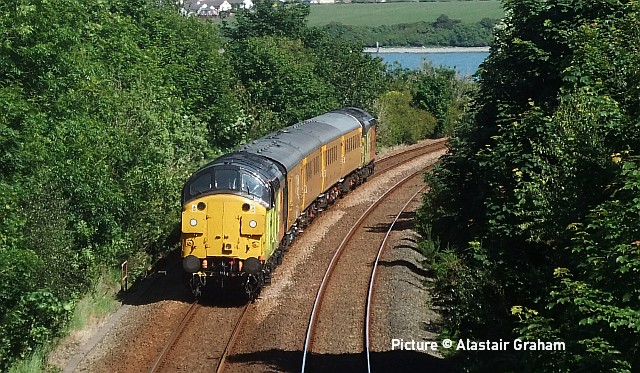
... and heading for the Stanley Embankment (Alastair Graham).
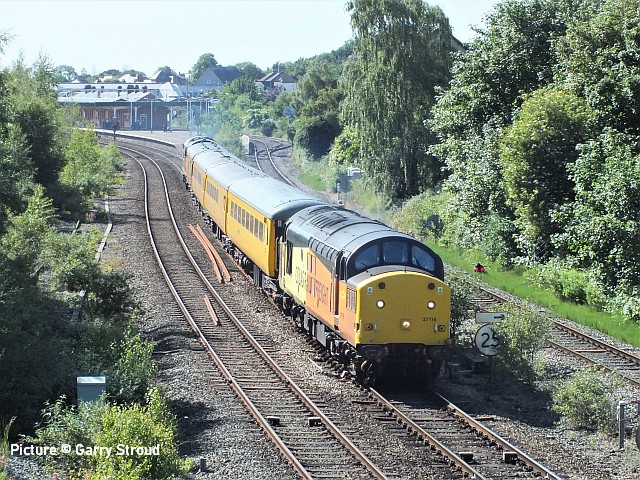
With return 16:15 Holyhead to Crewe , the pair storm past Llandudno Junction at 16:55 on their way back to Crewe (Garry Stroud).
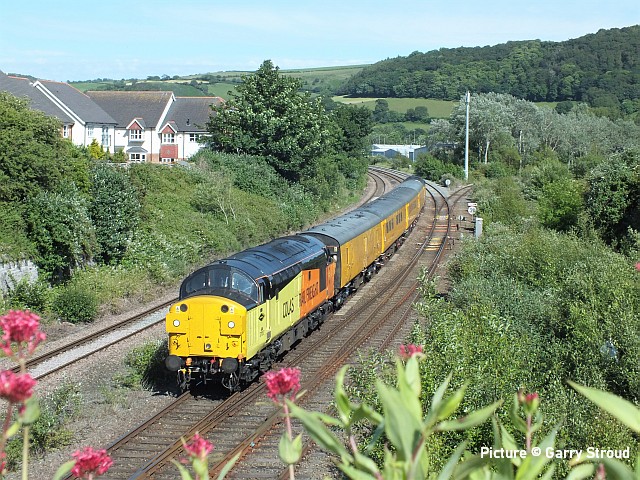
A rear view shot this time of 37 057 on the rear having just passed under Queens Road bridge on their way back to Crewe (Garry Stroud).

37 057 on the rear eastbound at Flint (Stephen Dennett).
Why the 37s missed out Llandudno
As reported in the last issue, the 'Three Peaks' railtour on 11 June, which was planned to visit Llandudno station on the way back, did not venture down the branch. The root of the problem appears to have been the long-standing method of stating the length of a train, especially a charter train, as so-many coaches. In the case the train was described as 'Top and Tail Load 10.' (One of the locos would have been moved to the other end of the train at Llandudno Junction.) 'Load 10' trains have visited Llandudno on many occasions, but formed of Mk1 or Mk2 coaches.
However, this train was mostly formed of Mk3 coaches, which are considerably longer than older versions, and had the train proceeded to Llandudno its rear coaches would have still have been detected by the track circuit in the station throat, and the 'locking' system which ensures safety would have prevented any other movements. Fortunately, local staff noticed the problem and reported it to 'Control' in time for the route to be amended.
Looking back: Diesels in the 70s part 3 - by David Pool
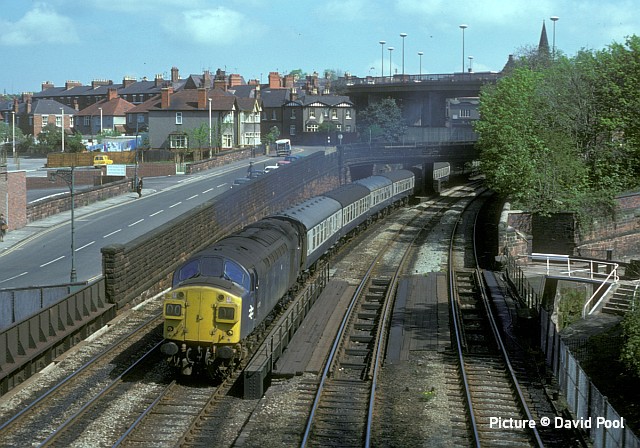
“Whistler” 40 129 is leaving Chester with the 10:35 from Manchester Victoria to Llandudno on 8 May 1976. Like most of the English Electric Class 40s, 40 129 was built by Vulcan Foundry and previously numbered D329. The batch D325 to D344 had end doors in the nose, similar to earlier Class 40s, but with a new requirement to display headcodes it was necessary to split these in separate boxes on each side of the doors. Later Class 40s did not have the end doors, and the headcode boxes no longer needed to be split.
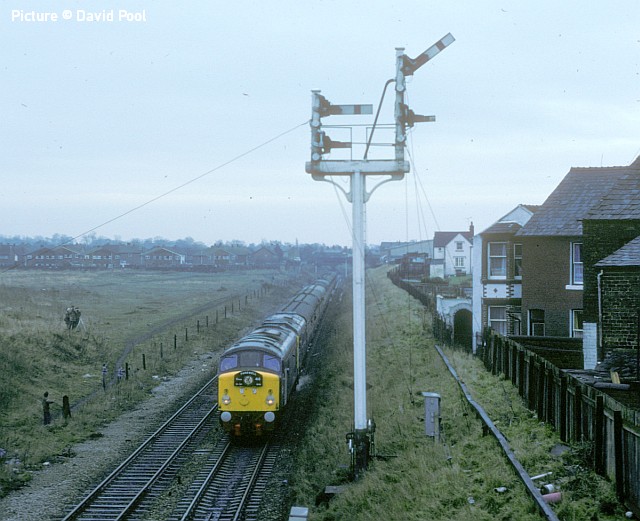
.
Although the Class 45 and Class 46 locomotives are known as “Peaks”, this was the name given originally to the earlier Class 44 locomotives, of which ten were built and named after mountainous peaks in England and Wales. Class 44s were relatively rare in comparison with the 127 Class 45s and 56 Class 46s, and when a Peak Farewell Railtour was arranged with the last surviving Class 44 it was a special occasion. Unfortunately the dull weather on 21 January 1978 was perhaps to be expected, and my first shot was taken as 44 008 Penyghent and 24 133 were passing the site of Chester 6A shed at Hoole Lane.
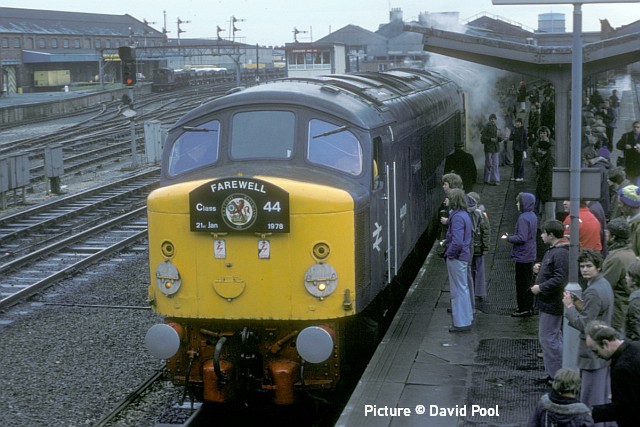
The Railtour Files website states that 24 133 was put on at Crewe due to problems with the carriage steam heating between Nottingham and Crewe with 44 009 Snowdon. 44 008 was also put on at Crewe, and 24 133 came off at Chester, so presumably the problem was resolved for the return journey to Nottingham. The train was at Chester between 13:10 and 14:30, and it would not surprise me if some readers of NWCR News recognised people in the picture!
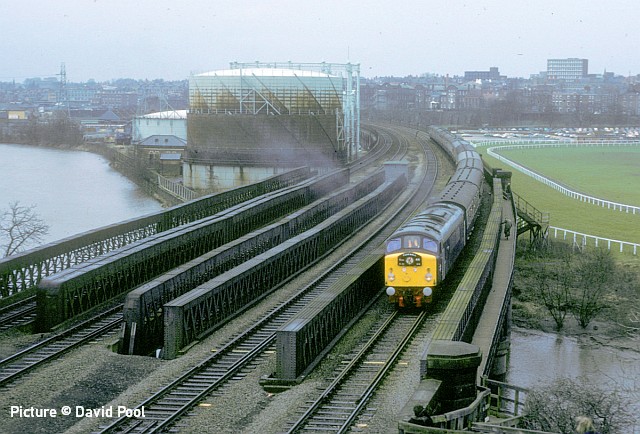
The wait at Chester gave me time to get to the Dee Bridge at the Roodee, and it is interesting to see how much this view has changed in the last 40 years. The two tracks on the left were taken out of service when the bridge was refurbished in the following year.
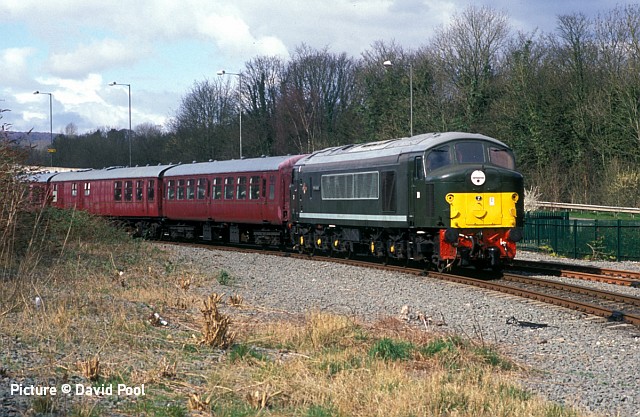
44 008 Penyghent was one or the two Class 44s preserved, and is now based on the Peak Rail line. On 23 March 2014 it was entering Matlock station in green livery, numbered D8.
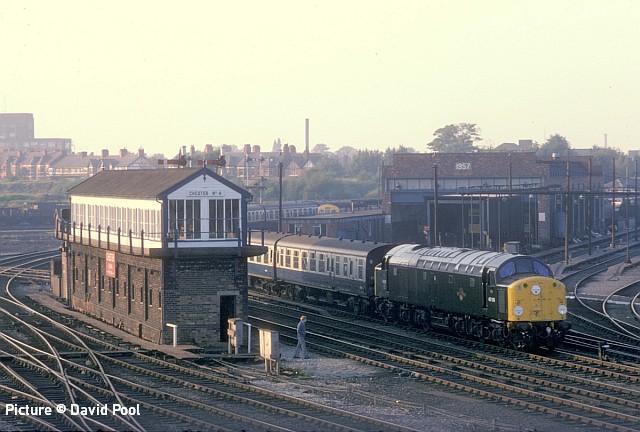
Another survivor, presently running on the Severn Valley Railway, has been 40 106. This Class 40 was originally D306 and now carries the name Atlantic Conveyor, in memory of the ship lost in the Falklands War. In BR days, it was the last Class 40 in green livery, and entered Crewe Works in 1978 for a final overhaul before withdrawal. It was reported as having been painted in BR blue, but emerged in green, complete with the later BR crest. On 7 October 1978 it is passing Chester No.4 Signal Box, apparently coming from the Birkenhead direction, but I have no record of the working, and it does not seem to have been a Railtour.
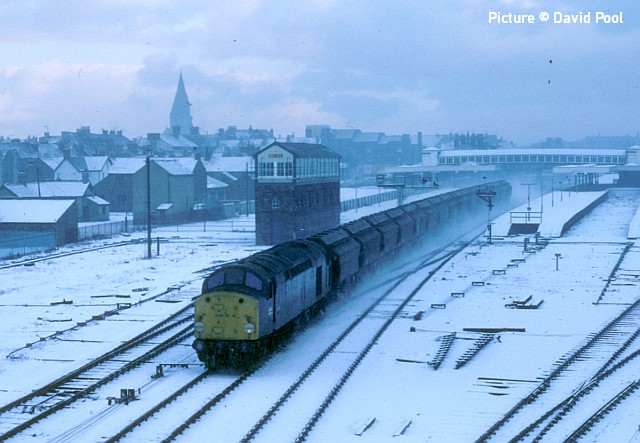
Don’t expect the sun to be always shining at Rhyl in the Winter! On 29 January 1979 40 015 was on the through line with a Petroleum Coke freight from Humber Refinery to the Rio Tinto plant at Holyhead, for use in the aluminium smelting process. The site of Rhyl shed, closed 15 years earlier, is on the left of the picture, and only two platforms are now in use.
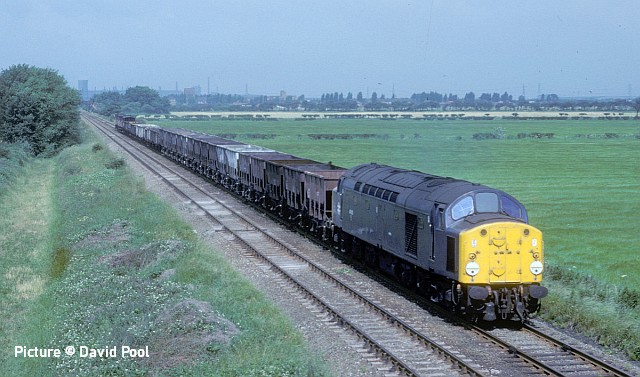
Freights to and from Dee Marsh Junction were infrequent during the day, and I was lucky to be able to see 40 012 at Saughall on 7 July 1974. This is another surviving Class 40, and had been recently repainted in BR blue, losing its Aureol nameplates and its original number D212. The train comprises mostly what I think are 25 ton iron ore hopper wagons, and I assume they are returning to Scotland from Shotton. 40 012 is now based at the Midland Railway Centre in Derbyshire.

[This image was omitted from Part 2 due to an editing error. ] On 9 August 1975, seen departing from Chester, the 09:45 Llandudno to Euston had 47 034, which would come off at Crewe and probably be replaced by a Class 86 electric.
Mold, 1963? - by Barrie Hughes
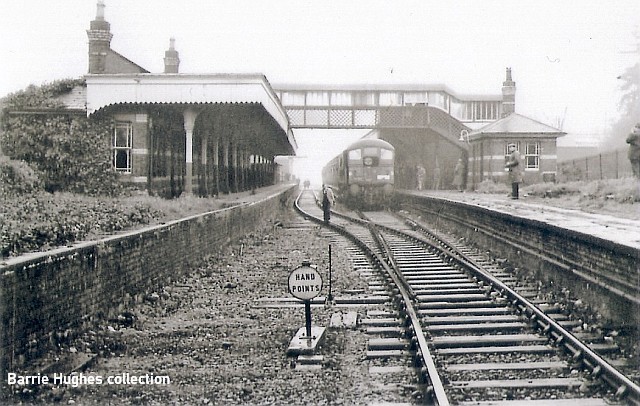
These two images appear to portray the 'Coed Talon Farewell Excursion' in 1963, In which case the one above shows the brake van special arriving in Mold, presumably before the excursion ...
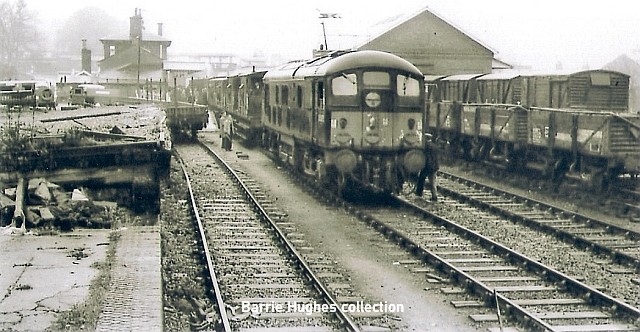
... and this one after the run round and preparing to depart ... or equally well could be on the return from Coed Talon. This is a rather wet misty scene with chaps in gaberdine macs, so could be Autumn 1963. Class 24 was delivered from 1958-61 so Autumn 1958 is the earliest possible date.
Can any readers confirm this and/or add more information?
The Mold image we featured in the last issue brought up some interesting connections online. The loco, 24 146 was involved in an accident at Weedon near Northampton when a defective wagon derailed and a passing passenger train, fortunately travelling at low speed, collided with the wagon. Fortunately no one was hurt in the incident and neither the passenger train nor 24 146 were derailed. See the Accident Report.
24 146 was painted Rail Blue on release from a works visit March 1968 and given a TOPS number on 19 March 1974. it was withdrawn 31 January 1976 and cut up at Swindon October 1976.
North Wales Coast home page | Archive | Previous Notice Board